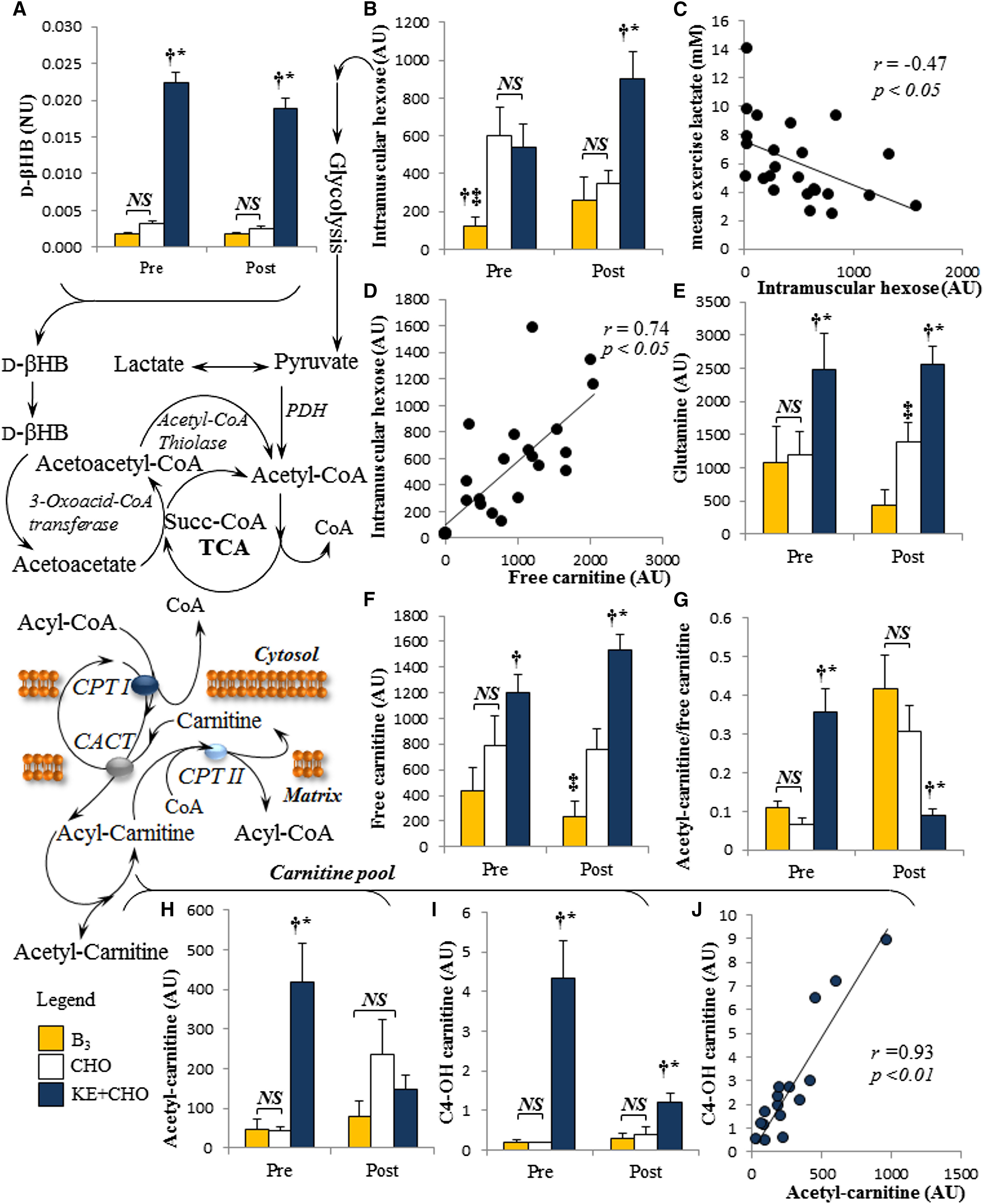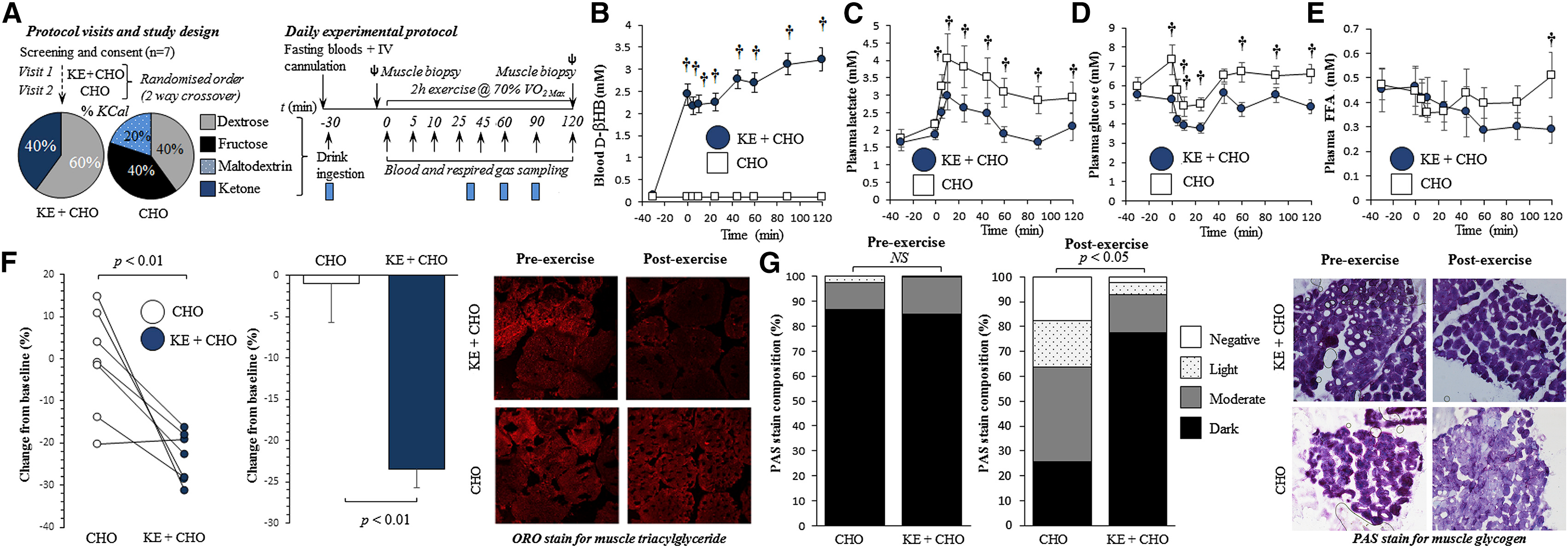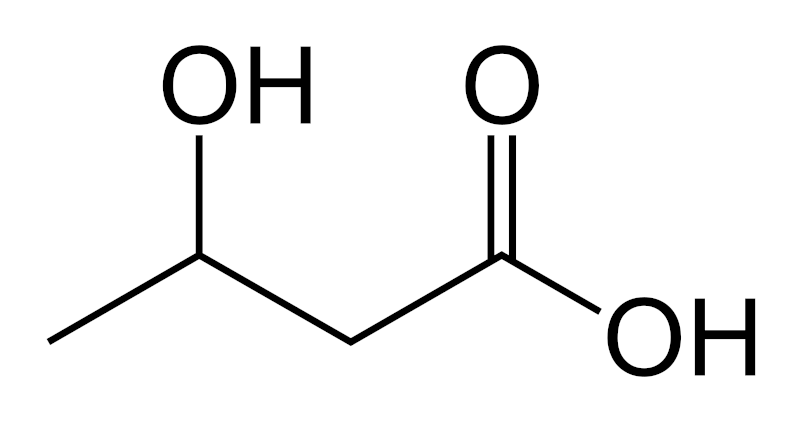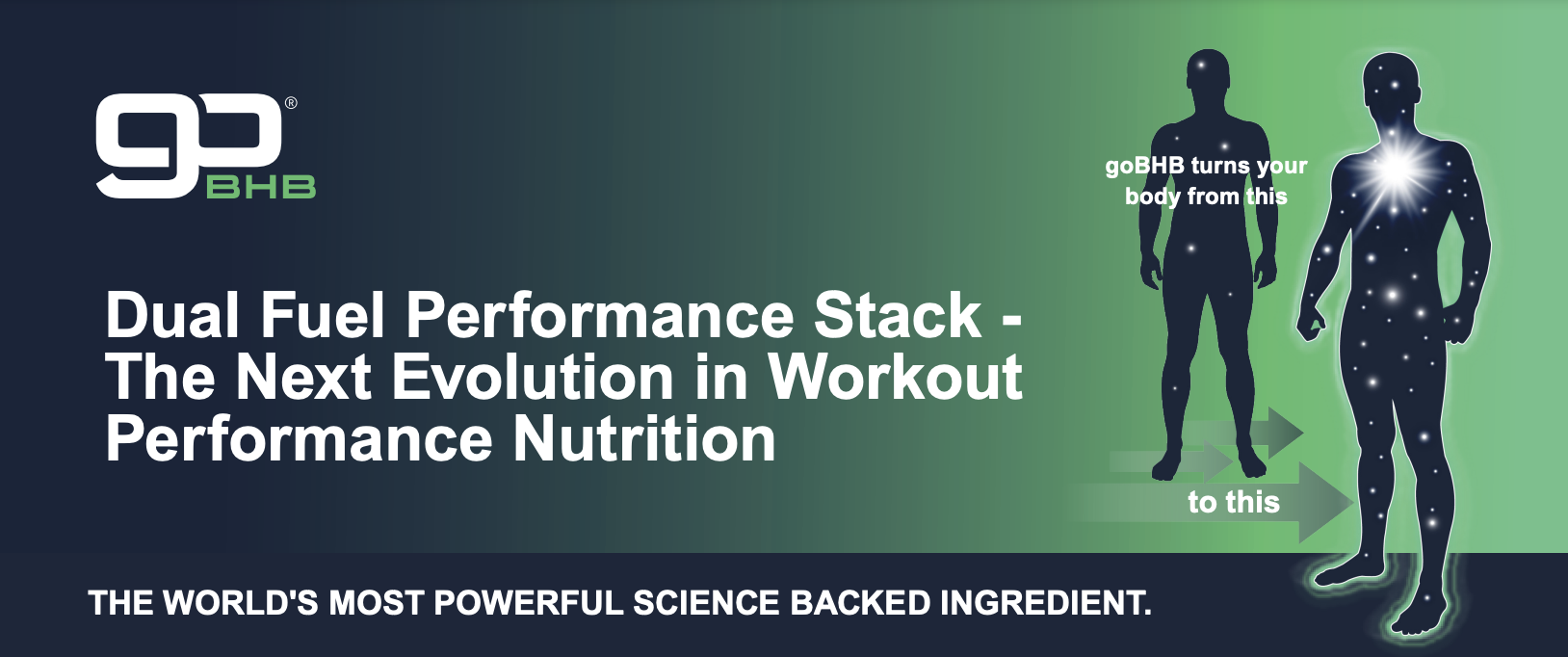
Fuel your workouts with the power of "dual fuel", combining goBHB ketones and carbs for optimal performance.
For decades, carbohydrates have been the go-to fuel for athletes, especially in endurance sports. The rationale is simple: carbohydrates, stored in the body as glycogen, are a readily accessible source of energy during high-intensity exercise. However, the body's glycogen reserves are finite, and once depleted, performance can suffer dramatically.[1-3]
This has led to the development of countless gels, drinks, and bars designed to help athletes "top off" their glycogen stores during training and competition. That's what we call the replenishment model – adding glucose back into the system once it's depleted, either continuously during exercise or all at once when the exercise is finished.
Glycogen Sparing – The Next Generation of Performance Nutrition
But what if we could take this a step further? What if we could help athletes keep their glycogen reserves fuller to begin with, by slowing their rate of glycogen consumption at a given exercise intensity? There's a way to do it -- and it's not through reducing performance.
The Role of Glycogen in Athletic Performance
During exercise, the body burns a mixture of fat and carbohydrates to fuel itself. The more intense the effort, the more the body relies on carbohydrates, particularly glycogen. This has been well-researched, including a 1993 study where trained subjects were monitored during varied exercise intensities. The researchers found that the closer the intensity was to the subjects' VO2max, the more carbohydrates they burned from stored glycogen.[4]
Unfortunately, glycogen reserves are limited, and the more glycogen an athlete burns through, the harder it becomes to sustain high-intensity efforts. As glycogen stores are depleted, anaerobic capacity begins to drop, leading to fatigue and decreased performance.[1]
This is why endurance athletes are constantly consuming carbohydrates during events like marathons – they want to preserve their top-end power for the entire duration of the race. Again, the replenishment model.
But glycogen depletion isn't just a concern for endurance athletes. Research has shown that significant glycogen reductions can occur during high-intensity efforts lasting just a few minutes.[5] Moreover, glycogen doesn't only affect performance during exercise – it's also crucial for recovery. A glycogen-depleted state can compromise muscle recovery, leaving fitness gains on the table and increasing the risk of fatigue.[6]
Exogenous Ketones: A New Tool for Glycogen Sparing

New unpublished preclinical data shows that 1,3-butanediol is a net ATP consumer in the liver, as opposed to free acid BHB and MCT which are ATP (energy) producers.[7] This sheds a whole new light on the BHB vs. Ketone Esters.
This is where our alternative fuel source comes into play: exogenous ketones.
Ketones are the end product of ketogenic metabolism, produced by the liver during periods of intense exercise, a very low carbohydrate intake, or food scarcity.[8] They serve as an alternative energy source to glucose, helping to spare glycogen and delay fatigue during exercise. There are a few ketones made in the body, but beta-hydroxybutyrate (BHB) is the primary one.
Traditionally, the body only produces ketones in significant amounts during nutritional ketosis, a state that generally requires carbohydrate restriction, which isn't ideal for athletes who rely on quick, high-intensity efforts. Exogenous ketones, on the other hand, allow athletes to bypass this limitation by providing a direct source of ketones without the need to deplete glycogen.
In other words, you can get the best of both worlds: topped off glycogen stores and increased metabolic flexibility from the exogenous ketones, specifically BHB (beta-hydroxybutyrate), which is sold as goBHB from Ketone Labs.
-
Dual Fuel Experiment: Combining Ketones and Carbs, Improving Performance
A 2016 study titled "Nutritional Ketosis Alters Fuel Preference and Thereby Endurance Performance in Athletes" explored this concept.[9] In one experiment within the study, endurance athletes were given either a carbohydrate drink or a mixture of carbohydrates and exogenous ketones before performing a cycling test at 70% VO2max for two hours.
KE+CHO has significantly greater carbohydrate storage in their muscles after the training session.[9]
The results were striking: athletes who consumed the mixture of carbs and ketones had significantly more muscle glycogen left at the end of the test compared to those who only consumed carbohydrates.[9]
This finding has profound implications for sports nutrition – it clearly implies that by sparing glycogen, exogenous ketone can help athletes maintain a higher level of performance for longer periods.
But the best part is the study's finding that, unlike nutritional ketosis, exogenous ketone administration caused no decrease in performance. In fact, the opposite occurred – time trial performance improved, with athletes cycling further during the test compared to those who only consumed carbohydrates.[9]
-
Reduction of Exercise-Induced Fatigue
One of the key benefits of exogenous ketones that deserves more attention is their ability to reduce exercise-induced fatigue.
During high-intensity efforts, the body shifts to anaerobic glucose metabolism, leading to the production of lactic acid (AKA lactate)[10] – the higher the intensity, the more your body relies on anaerobic metabolism. The issue is that the elevated lactate levels from high-intensity exercise are associated with muscle fatigue, soreness, and reduced performance.
However, when exogenous ketones are introduced into the energy mix, they can be used to generate ATP without generating lactic acid as a byproduct.[11] We've seen this specifically with MCT, D-BHB, and L-BHB, all of which can increase the liver's ATP production,[7] as opposed to the disastrous alcohol, 1,3-Butanediol.
By lowering lactate accumulation with the appropriate exogenous ketones (D-BHB and/or L-BHB), we can potentially help athletes maintain their power output and endurance for longer periods, which is particularly beneficial during intense or prolonged exercise sessions.
This reduction in muscle soreness should also translate into faster recovery times, allowing athletes to train more consistently and effectively.
-
Enhanced Recovery Through Inflammation and Oxidative Stress Reduction
Beyond their role in energy production, exogenous ketones also offer significant benefits for recovery, particularly by reducing inflammation and oxidative stress. After intense exercise, the body experiences a surge in reactive oxygen species (ROS), which can lead to oxidative damage in muscle tissues. This oxidative stress is a major contributor to muscle soreness and delayed recovery.[12]
Exogenous ketones have been shown to possess anti-inflammatory and antioxidant properties, which help mitigate the effects of oxidative stress.[13] By reducing inflammation, exogenous ketones could promote quicker muscle repair and regeneration, shortening the recovery window between training sessions. This could be crucial for athletes who engage in high-frequency training or those preparing for back-to-back competitions.
-
Cognitive and Psychological Benefits
In addition to their physical benefits, exogenous ketones also offer cognitive and psychological advantages that can enhance overall athletic performance. Ketones are able to cross the blood-brain barrier, providing an efficient energy source for the brain, which can lead to improved mental clarity, focus, and decision-making during exercise – critical factors in winning both individual and team sports.
Extrapolating from an MCT + Glucose study
A recent study published in Nutrients explored the effects of consuming medium-chain triglyceride (MCT) oil with and without glucose on ketone production, blood glucose, insulin levels, and cognitive function in healthy adults.[14]
The study involved 19 healthy participants (average age: 24, which rules out the possibility that observed benefits are merely corrections of age-related deficits) who were given MCT oil alone and in combination with glucose. The primary goal was to determine how the co-administration of MCT oil and glucose would affect the production of beta-hydroxybutyrate (BHB), a key ketone body, and assess its impact on cognitive performance.[14]
Moreover, the study reported improved cognitive function in participants after consuming MCT oil with glucose. Specifically, the combination led to better performance in arithmetic and vocabulary subtests, highlighting the potential cognitive benefits of MCT oil, especially when combined with carbohydrates.[14] This cognitive enhancement could be attributed to the dual energy sources provided by both ketones and glucose, offering a more stable and sustained energy supply to the brain during demanding mental tasks.
The ability to modulate ketone production while maintaining glucose availability suggests that MCT oil (or exogenous BHB, which is the primary MCT metabolite), when used strategically with carbohydrates, could provide a balanced approach to fueling the body and brain during exercise.
For Formulators: Consider The Competitive Advantage of Glycogen Sparing

If this study[7] is to be confirmed, 1,3-butanediol is what we consider to be straight-up liver poison.
There are already countless performance gels and drinks on the market designed to help athletes top off their glycogen stores during exercise. The replenishment model has been done to death. We simply don't need more!
The concept of glycogen sparing offers a more interesting value proposition for athletes. By incorporating exogenous ketones into their nutrition strategy, athletes can avoid the blood sugar swings and fatigue associated with glycogen depletion.
This isn't just a theoretical benefit – it's something that athletes who have experienced the gnarly effects of blood sugar fluctuations during endurance training can personally attest to. The ability to maintain more stable energy levels both during and after a workout can significantly enhance both the athlete's performance as well as their overall quality of life after the training or race.
You want any and all glycogen at the finish line
Even if there were no performance benefit to glycogen sparing – which there clearly is – it would still be worth paying extra for the peace of mind that comes with knowing your glycogen reserves are being preserved. Athletically, you never know when you're going to be faced with a sprint to the finish against someone else.
But it's also useful for athletes who have busy lives and need to balance their training with other responsibilities. Extreme fatigue after a workout can interfere with daily life, making it harder to perform at your best in all respects.
A Call to Action for the Industry

Rob Rogers of Ketone Labs joins PricePlow for Episode #131 to explain the story behind goBHB, and how they're BACK on the market for supplement formulators!
The science behind glycogen sparing is robust, and the benefits for both performance and recovery are significant. By incorporating exogenous ketones into their product lines, brands can offer athletes a competitive advantage that goes beyond the traditional focus on carbohydrate replenishment.
As the industry continues to evolve, we expect to see more brands embracing the concept of glycogen sparing, because this approach will offer athletes a new way to optimize their lifestyles. Whether you're an endurance athlete looking to go the extra mile, or simply someone who wants to get the most out of every workout, glycogen sparing is a game-changer that shouldn't be overlooked.
And, quite frankly, we're all tired of the "energy gels" and "goos" that are nothing but cheap carbohydrates. We can do better, and we do better through this idea of dual fuel, with goBHB from Ketone Labs.







Comments and Discussion (Powered by the PricePlow Forum)